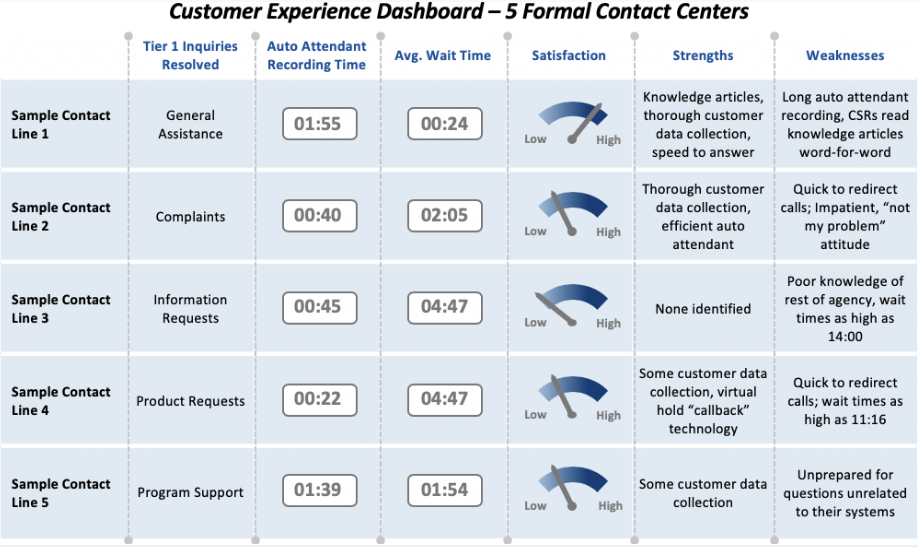Mystery Shopping to Evaluate Federal Agency Contact Center Performance
By the Contact Center - Center of Excellence Team
Background
Mystery shopping is a great way to evaluate a Contact Center’s performance and the level of service that customers receive. The way the Customer Service Representative answers the phone will often form a customer’s first and most often lasting impression of the agency.
The technique utilizes “secret shoppers” who pose as customers with an inquiry for the agency’s Contact Center. This process can deliver unbiased and unfiltered insights into how Customer Service Representatives are handling customer inquiries. Mystery shopping can provide insights into:
- Information about products and services provided by the agency or organization
- Competency of Customer Service Representatives
- Consistency and quality of customer experience
This process is a valuable tool in understanding and evaluating the Agency’s customer-facing services and operations.
Approach
The first step is to identify the agency’s goals and objectives for the contact center. Some common objectives in conducting these calls are to:
- Assess the agency’s customer experience
- Evaluate information accuracy and consistency
- Evaluate timeliness of answering the phone
- Evaluate workflow processes
- Assess timeliness of returning customer messages
- Identify pain points
- Identify relationships between various contact lines, if applicable (e.g., when multiple lines exist within an agency)
The next step should be to develop customer personas and corresponding sample questions for each. Creating a list of personas involves thinking critically about the types of customers the agency serves on a regular basis. Specifically, what kinds of questions these customers usually pose and what are their most pressing needs? Based on that information, create a list of sample target questions that a real customer might ask during their call and have secret shoppers use this as a guide in conducting their tests.
Next, determine the number of calls to be conducted, breadth of lines contacted (whether the focus of the research is on one or all of an agency’s contact lines), and metrics to be measured. Common metrics that may be helpful for measuring Contact Center performance include:
- Service Level
- Average Speed of Answer
- Abandoned Calls
- Average Handle Time
- First Contact Resolution
- Customer Satisfaction
See below for a sample dashboard demonstrating what and how to document while conducting these tests:
Caption: Our Contact Center Template and example results
Applications
With the information and data collected from mystery shopping calls, agency’s will identify pain points and opportunities for improvement, as well as strengths and competencies of their contact centers. This information can be used to understand common problems amongst Customer Service Representatives and implement improvements to increase customer satisfaction. These initiatives may be technological, workforce-related, operational, or all of the above. Next steps may include updating training materials, retraining staff to better handle topics that were poorly addressed during mystery calls, routing calls in a more efficient manner to meet customer’s specific needs, and creating more or different contact channels.
Mystery shopping calls can provide valuable insights into the current state of an agency’s customer experience and actionable ways to improve its services. Here are four more tips for measuring the success of your organization’s Center performance.
Learn more about the Centers of Excellence and our Contact Center offerings by visiting coe.gsa.gov. Follow us on Twitter @GSACoE to join our ongoing conversations about IT modernization in government.
Return to Updates

